ABOUT SHAW /
Shaw Cinemas, Pre War Shaw Cinemas, Pre War
Shaw Cinemas in Asia, Pre War

Pre-war 'Shaw Brothers' logo
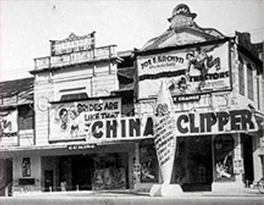
The Alhambra, Singapore
By 1939, the Shaws operated a chain of 139 cinemas across Singapore, Malaysia, Thailand, Indonesia and Indo-China. Some were bought or built by the Shaws, many were leased or operated in partnership with their owners. All the cinemas were managed under 'Malayan Theatres Limited', a subsidiary of Shaw Brothers Limited.
In Singapore, the Shaws expanded from the Empire to a brick building, the Alhambra on Beach Road. This was shortly after its original owner, Tan Cheng Kee died and his family's lease ran out.
The Alhambra became the first Singapore cinema to have air conditioning and played films like Errol Flynn's Robin Hood to packed sessions.
At around the same time, the Marlborough cinema in North Bridge Road also came under Shaw management. It showed predominantly Chinese films with the occasional Indian film. Both the Alhambra and the Marlborough cinemas mark the site where Shaw Towers stand today.
Other notable Shaw cinemas in Singapore before the Japanese Occupation included the Pavilion, Roxy, Palacegay (later renamed Oriental), Royal, New Star, Palace and Queens. Within the New World, there were the Grand, Central and Sun theatres. Within the Great World, there was the Atlantic, Sky and Globe theatres.
During this period, 70% of films shown in these cinemas were American, 16% were British and 13% were Chinese. Shaw films were distributed through the company's distribution arm the 'Eastern Film Agency'.
Newsreels were filmlets that preceded each show. Common until the advent of television, these newsreels from producers such as Pathe was an essential source of information for the public. Some of the newsreels documenting China were produced by Shaw's Unique Film Productions studio. In Malaya, the Shaw Newsreel Film Unit covered events.
In Malaysia, Shaw operated cinemas all over the country and dominated the exhibition scene.
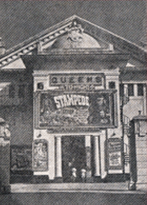
Queens Cinema, Singapore
In the state of Selangor, Kuala Lumpur had the Madras, Capitol, Coliseum, Sun and Sultan Street Theatre Hall while Kajang had the Sun and Kajang Theatre. In the state of Negri Sembilang, Seremban had the Sapphire, Plaza and Astoria Theatres and in Kuala Pilah, there was the Sun.
In Bahau, the cinema was the Empire and in Mantin, it was the Sun.
In the state of Johore, Johore Bahru had the Royal and Pontian; In Batu Pahat, the cinemas were Tye Kuan, Sultana and Ban Swee Halls; In Kluang, there was the coronation cinema;
In Senggarang, there was the Lim Lock Theatre; In Segamat, the cinema was the Liberty; in Tangkak, the cinema was the Empire and in Muar, there was the Asiatic, Capitol and Central cinemas. In Malacca, there was the New Rialto and City cinemas; In Sungei Bahru, there was the Empire.
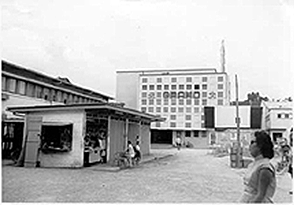
Grand, New World, Singapore
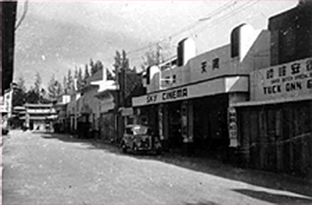
Sky, Great World, Singapore
In the state of Perak, Ipoh had the Lido, Sun, Eu Tong Sen Hall, Rex, Isis, Capitol, Grand and Broadway Theatres in Jubilee Park; Taiping had the Lido, Tupat Halls and Sun Theatres; Telok Anson had the Empire, Diamond, Royal Theatres; Kuala Kangsar had the Empire Theatre; Kampur had the Sun Cinema; Tapah had the Empire and Tapah Hall and in Batu Gajah, the cinemas were the Hindu Temple Hall and Empire Theatre.
In Bidor, there was also an Empire Theatre.
In the state of Kedah, Alor Star had the Empire, Royal and Jalan Bahru Theatre Halls; Kulim had the Coronation and Empire Theatre; Sungei Patani had the Sun and Empire Theatre while in Kuala Kedah, there was the Sun Talkie Hall. In Gurun, there was the Weng Fatt Hall. In Sungei Lallang, there was the Empire cinema.
In Penang, the cinemas were the Rex, Sun (previously known as 'Drury Lane Theatre'), Liberty, Royal, Majestic, Windsor (later Capitol), Metropole, Globe and Palarnippa Theatre.
In the state of Kelantan, there was the Empire and Lido in Kota Bahru and in Kuala Krai, there was the Empire Theatre.
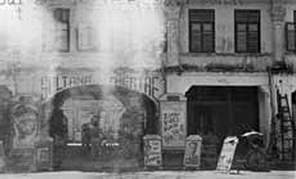
Sultana cinema, Batu Pahat, Malaysia
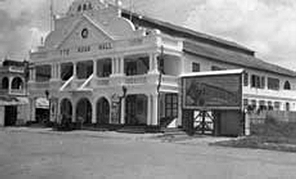
Tye Kuan, Batu Pahat, Malaysia
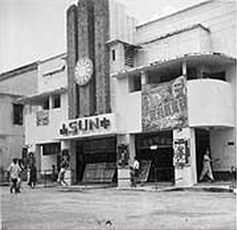
The Sun, Kampur, Malaysia
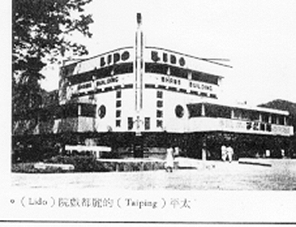
The Lido, Taipeng, Malaysia
In the state of Pahang, Kuantan had the Who Peng Hall and Sun Talkies while Bentong had the Sun Cinema. In Raub, the cinemas were the Jubilee and Sun Talkies. In Mentakab, there was the Sun Talkies and Victory Theatre. In Kuala Lipis there was the Empire Talkies.In the state of Trengganu, there was the Sun Talkies in Kememan.
In Sabah and Sarawak, the Shaws ran the Capitol (previously Renee's Hall) and Grand cinemas in Miri; Kings, Liberty, Capitol and Tai Koon theatre in Sandakan, New Gaiety in Papar, Beaufort Hall in Beaufort and Labuan Hall in Labuan.
In Brunei, the Shaws operated the Capitol in Kuala Belait.
Many cinemas in Malaysia were originally Malay Bangsawan opera houses. Some of them were leased outright to the Shaws.
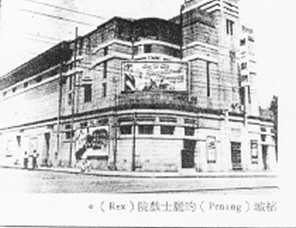
The Rex, Penang, Malaysia
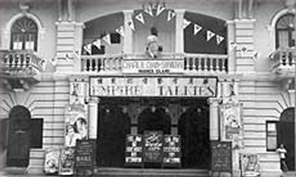
Empire Talkies, Kuala Lipis, Malaysia
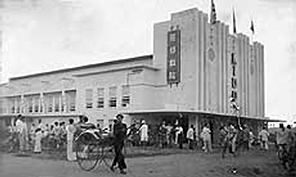
The Lido, Kota Bahru, Malaysia
Others were retrofitted by their owners in joint venture with the Shaws. For these, the owners would install the seats and fittings, while the Shaws would install the screen, sound and projection system. The films shown would be exclusively Shaw's.
In some joint ventures, the owners would own all of the fittings and equipment while Shaw would manage the booking of films into the cinemas for a fee.
On a nightly basis, one or two representatives from Shaw would be stationed at the cinema to check the nightly receipts and to collect the takings. Film rental would be fixed between 40% and 50% depending on the type of films played, whether they be English, Malay, Mandarin, Tamil or Chinese dialect.
Even silent films, which continued to be popular in some of the smaller towns throughout the late 30s and early 40s could command rentals of up to 40%. For 'super programs' or what is today known as blockbusters, terms would be negotiated on a case by case basis. The decision as to whether a film is 'super' or not was based on collections of major towns in West Malaysia.
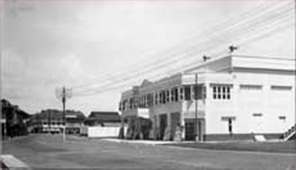
Kings cinema, Sandakan
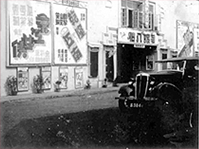
Movie billboards, Malaysia, 1940s
Many of the small town cinemas were wooden structures or a mixture of wood and brick. A few were open-air. The better cinemas were housed in brick or concrete and could accomodate between 500 to 800 people. For the upper classes, seats were constructed of rattan or wood or both, and most likely had arm rests. Some of these upper class seats even had leather cushions.
The lower classes had to make do with wooden benches, although some had added back support. Doors, windows and the screen were masked by black curtains. Many of the cinemas had stages for live performances. Publicity was in the form of photo show cases and advertising black boards. These were lighted by hanging lamps and neon signs.
Ceiling fans remained the norm, although a few key cinemas were being retrofitted with air conditioning by the close of the decade.
Over the years, the Shaws either bought over the more popular cinemas or built their own nearby. The number fluctuated through the decades, as new ones were purchased and old ones constantly upgraded, rebuilt, leased or sold.
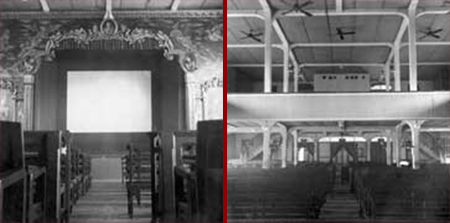
Unknown pre-war cinema interior, Malaysia
















